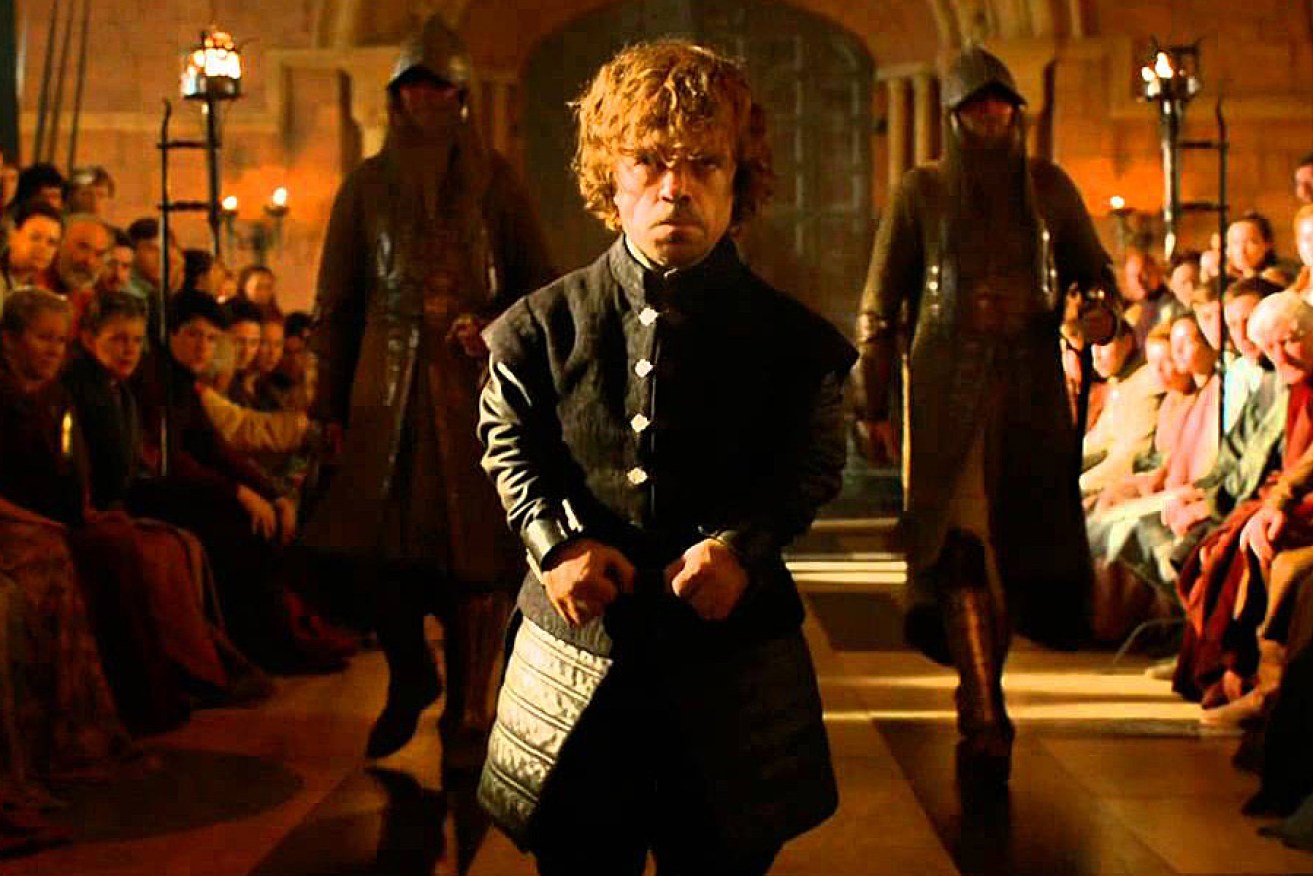The war for your TV dollar is heating up

Foxtel secured exclusive Australian broadcast rights to the hugely popular Game of Thrones, but hundreds of thousands of viewers illegally downloaded it.
The world of Australia’s video-on-demand industry is quite the ballet of content power struggles, infrastructure issues and consumer demands.
Not a week goes by where we don’t hear an announcement about a new media content deal, new entertainment technology, or Netflix executives visiting our shores, once again, to iron out rights and territory deals.
Our viewing habits are likewise changing; when we’re not salivating over the latest episode of Orange Is the New Black, we’re emotionally investing in a new reality-TV cooking show.
Combine that with the juggernaut of technological innovation, and the state of the digital media streaming nation becomes very interesting.
“In homes, you have multiple screens and all of us are opting to watch our own thing, in our own time,” says Quickflix CEO Stephen Langsford.
“What we’ll see [in the future] is that behaviour embraced increasingly by mainstream consumers: multi-screen, on-demand screening.”
Northern exposure
This demand – traditionally led by early adopters – is something Langsford’s contemporaries in the Northern Hemisphere have been aware of for quite some time.
The Netflix model of delivery – offering home-delivered DVD rentals before moving into internet streaming content – is being emulated in many countries around the globe.
Speculation of Netflix Australia launching in the near future is rife, yet the company remains tight-lipped while still obviously examining Australia’s TV consumption and the national broadband infrastructure.
For Quickflix, the shift in the way Australians are watching television – especially those across new platforms and mobile devices – is an area the company must watch closely.
“We’ve responded to that by making content available in one form or another,” says Langsford.
“DVD, Bluray, premium pay-per-view for a latest release movie, or subscription screening via our catalogue: Quickflix spans that array of consumers because we deliver in DVD format and streaming, across an array of media devices, like Chromecast and Xbox One.”
Home-grown entertainment
Free-to-air channels Nine and Seven also have their eyes on the burgeoning SVOD market in Australia. The latter recently boosted funding of its future service, StreamCo, to the tune of $65 million.
In a country with only 30 per cent pay-TV penetration, this may seem like an obvious direction to take. Langsford isn’t so sure.
“There may be broadcasters indicating their interest in streaming on-demand technology, but we’ve got an early head-start in the streaming game,” he says.
“We’re offering content via subscription and on–demand, and we’ll continue to innovate and invest in new content.”
From these sentiments, you can assume the race may be over before it’s begun.
That said, for some Australians, free-to-air and pay-TV have no bearing on their lives when they can access a huge amount of content for free, via illegal downloading, or “torrenting”.
The recent series of HBO’s wildly popular fantasy-drama Game of Thrones is a textbook example of the current paradigm in Australia.
Fox’s hole
After News Corp-owned Foxtel secured exclusive Australian broadcast rights, the company cried foul when hundreds of thousands of Aussies opted instead to illegally download the program.
Naturally, this added more fire to the Australian piracy debate, allowing all and sundry to exploit torrenting statistics to both bolster their own claim and discredit the opposition’s.
Of course, if companies like Foxtel put down their piracy pitchforks for a moment, they would have time to take the pulse of the Australian public and find out their service model may be out-dated and over-priced.
With Quickflix and, potentially, Netflix nipping at their heels, no wonder Foxtel launched its own SVOD service, Presto, in March, 2014.
For $19.99 a month, you can access the media giant’s inventory of movies… and that’s it. The company does offer a similar service for TV shows, called Foxtel Play, but subscribers are still restricted to packaged options.
While it may seem the playing field in Australia is wide open for Netflix to come and set up shop, the company’s licensing discussions with Australian content gatekeepers have not gone as smoothly as planned. But this hasn’t stopped it earning money from Australian customers.
At present, the service may be geo-blocked – restricted via internet access according to location – but many Australians are still able to access it via VPN (Virtual Private Network) services, such as Unblock-Us and browser plug-in, Hola.
By turning a blind eye to activity that circumvents the system, Netflix is also avoiding the Australian content fees and taxes it would normally pay, effectively contributing zero to the Australian content market.
Langsford is quite frank about this fact.
“Come through the front door. Invest and pay up for rights; don’t have a free ride off Australia,” he says.
“What the audience wants is healthy, viable local competition, investing their revenues back into local content.”
When Netflix Australia plans to open may be a bigger mystery than Laura Palmer’s death, but its closed-door negotiations aren’t. The day will soon come when the speculation ceases and we get positive confirmation.
Until then, Australia has a number of reasonably priced options to satisfy our demand for television. But considering our growing appetite for new technology and TV, how long we remain satisfied remains to be seen.
This article was first published on The New Daily.




